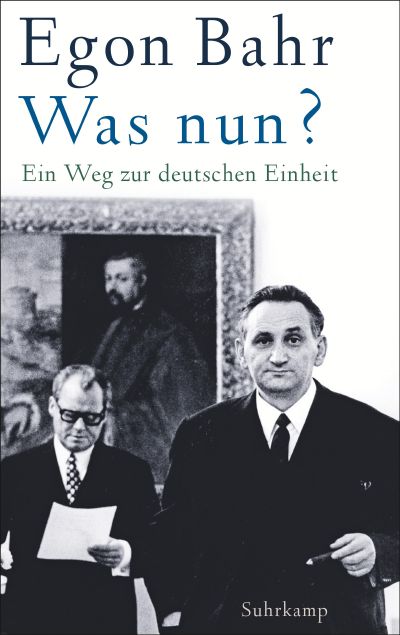In March 1966, Egon Bahr finished a manuscript. Under the title »What now?«, he outlines a new East German and intra-German policy. Proudly, he hands it to his superior – and the text disappears into a filing cabinet. Willy Brandt feared that in view of the possibility of a grand coalition, the memorandum held too much explosive potential. But the two soon start implementing Bahr’s concept step by step as part of the »Neue Ostpolitik,« the »new eastern policy«: They leave the Hallstein...
In March 1966, Egon Bahr finished a manuscript. Under the title »What now?«, he outlines a new East German and intra-German policy. Proudly, he hands it to his superior – and the text disappears into a filing cabinet. Willy Brandt feared that in view of the possibility of a grand coalition, the memorandum held too much explosive potential. But the two soon start implementing Bahr’s concept step by step as part of the »Neue Ostpolitik,« the »new eastern policy«: They leave the Hallstein Doctrine, invest in »Change through Rapprochement« and initiate political, social and economic agreements between West Germany and some of the Eastern bloc countries. Brandt’s Warschauer Kniefall, the Warsaw genuflection, is a symbol of this policy to this day. The Chancellor receives the Nobel Peace Prize for it, his most important advisor and closest friends a reputation for being a brilliant analyst of foreign affairs.
30 years after the fall of the Berlin Wall, Egon Bahr’s memorandum is finally published. Historian Peter Brandt locates Bahr’s strategy within the context of the political tensions of the 1960s. A historical document of the first rank.
»a crucial text to understanding Bahr’s rapprochement and intra-German policy.« Peter Brandt
»A historical document of the first rank.« Jürgen Christen, Buchmarkt
»a crucial text to understanding Bahr’s rapprochement and intra-German policy.« Peter Brandt
»A historical document of the first rank.« Jürgen Christen, Buchmarkt
Persons
Egon Bahr
Egon Bahr (1922-2015) began his political career in 1960 as head of the Press and Information Office for the State of Berlin and left for West Germany in 1966 where he held various public offices including Secretary of State of the German Chancellery and Minister for Economic Cooperation. Egon Bahr was one of the most important and closest advisors to Willy Brandt. The West German Ostpolitik would not have been possible without him. He is a legend of German post-war history.
Egon Bahr (1922-2015) began his political career in 1960 as head of the Press and Information Office for the State of Berlin and left for West...

